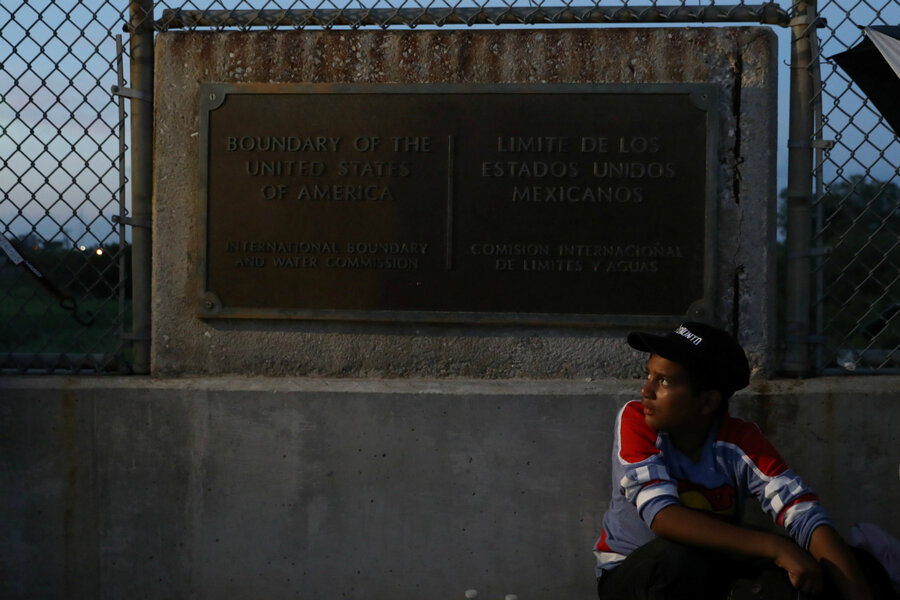Seeking asylum: how it works in the US
Amid headlines and changing policies from the Trump administration about immigration, it might be difficult for readers to discern just what are the guidelines governing migrants to the United States, and what defines a refugee or someone seeking asylum. Here are a few key questions to help make the distinction.
Q: How many asylum cases are there in the US?
The number of asylum filings more than tripled between fiscal years 2014 and 2017. That assessment was made by L. Francis Cissna, director of US Citizenship and Immigration Services (USCIS), at a House hearing in May. The tally for fiscal year 2017 – 141,695 asylum applications – was the highest annual number of claims in more than 20 years, Mr. Cissna also noted. The backlog of cases at immigration courts is rising as well. More than 318,000 asylum cases are pending, Cissna said.
In June, Attorney General Jeff Sessions ruled that in general, domestic or gang violence is not grounds for asylum. Many cases involving Central Americans are based on such claims.
As for the zero-tolerance policy, the Trump administration recently softened its stance a bit, saying that for the most part, families with children under age 5 would be released with ankle monitors instead of being detained indefinitely.
Q: What does it mean when a person seeks asylum in the US?
Asylum is a protection that can be granted to a migrant from a foreign country who is already in the US or at a border point. He or she must also meet the international definition of a refugee, which the United Nations puts as “someone who has been forced to flee his or her country because of persecution, war or violence.” When asylum is granted, it allows migrants to stay in the US on a renewable work visa and apply for a green card one year later, as well as apply for citizenship after five years, according to USCIS.
Affirmative asylum can be obtained through the voluntary act of arriving at a border point and initiating the process legally through an immigration officer, who schedules what is called a credible fear interview. If a migrant enters the US illegally, or has remained illegally, and is caught by immigration authorities, under current US law that person may be eligible to apply for defensive asylum. On July 12, though, a new Trump administration guidance told immigration officers to weigh whether an immigrant crossed the border illegally against them, potentially adding another basis for rejecting their asylum application.
Q: Are asylum-seekers the same as refugees?
The two terms, at least in the US, are not interchangeable. Much of the difference has to do with where a migrant is making a claim – in the US or abroad. Although both types of migrants are fleeing persecution, asylum-seekers come to the US of their own accord, whereas refugees are selected and transported by the US government.
The UN High Commissioner for Refugees is mandated to provide international protection to refugees, meaning that upon arrival in the US refugees usually receive temporary housing and cash assistance from voluntary resettlement agencies. Asylum-seekers often don’t receive the same initial resettlement services in the US because they didn’t arrive via the US government. But English classes, job search assistance, and other services are available to migrants who have been granted either status, says Randy Capps, director of research for US programs at the Migration Policy Institute in Washington.
Q: Where are migrants at the US-Mexican border from?
Currently, almost 50 percent of migrants at the border are fleeing Central America’s troubled Northern Triangle, made up of Honduras, El Salvador, and Guatemala. Forty-six percent of those at the border are from Mexico, Dr. Capps says. While the US has provided these countries with billions of dollars in aid over the past 10 years, drug trafficking, corruption, gang violence, and other dangers still disrupt the area immensely,







